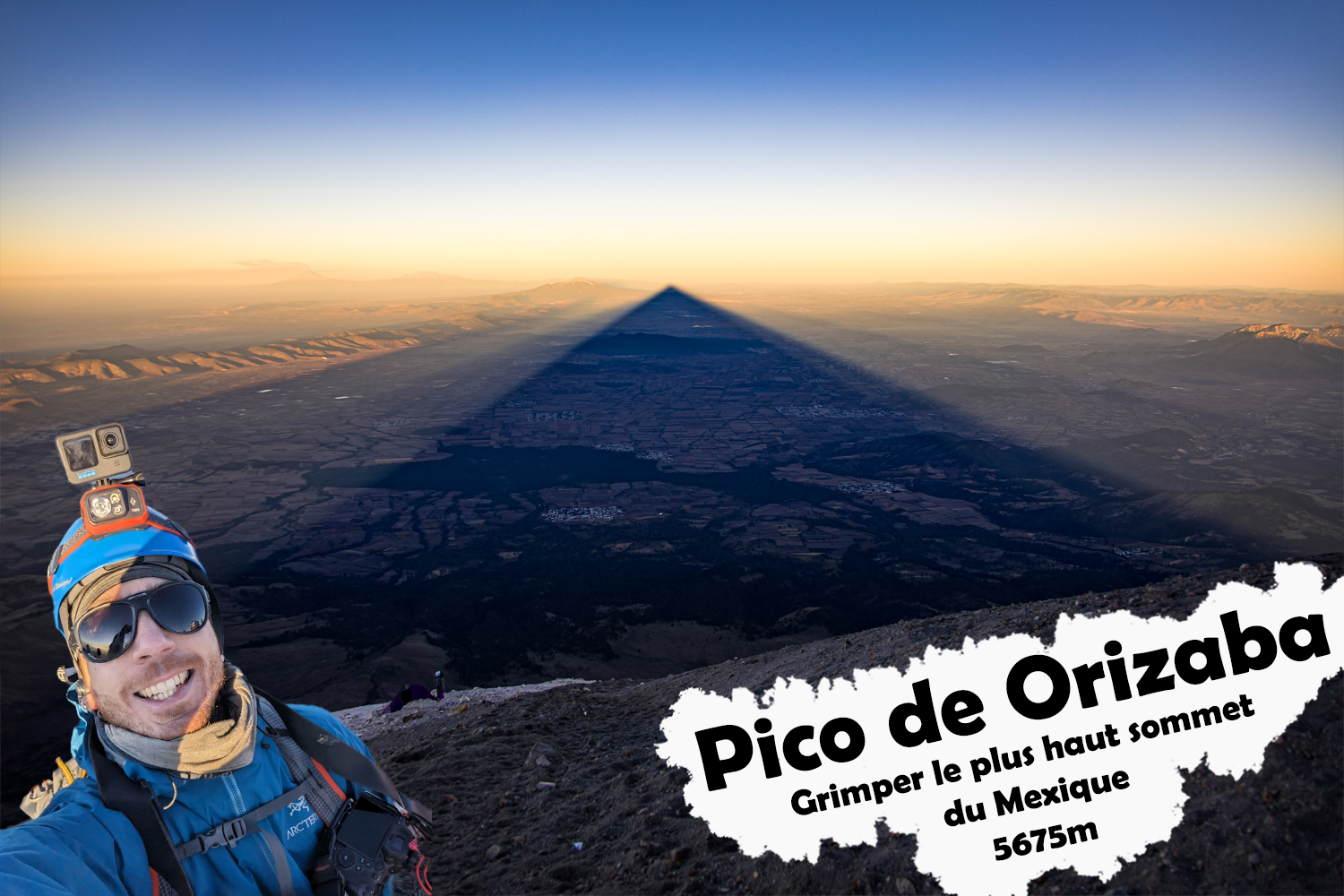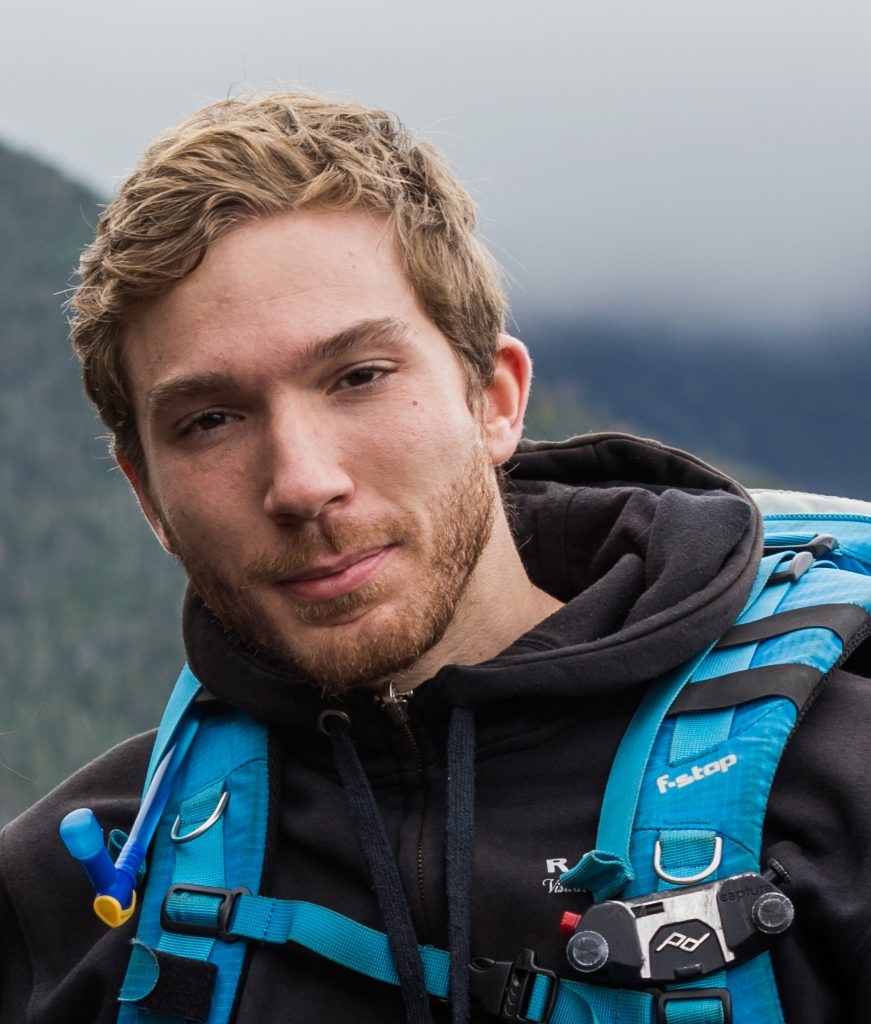Climbing a mountain is much more than just a sporting challenge. It's a complete human adventure that tests body, mind and team spirit. I recently had the opportunity to live this experience to the full by climbing two of Mexico's highest volcanoes: Iztaccíhuatl and Pico de Orizaba. This expedition, although independent, was part of the HM3 course offered by Attitude Montagnea Quebec-based company specializing in high mountain training. What makes this course so special? Let me tell you about my adventure, filled with learning, overcoming challenges and breathtaking scenery.
What is HM3?
HM3 is the final stage in Attitude Montagne's series of high mountain courses. The aim of this series of courses is to give you the tools to organize your own expedition. During HM3, the idea is to give you an immersive experience where you are responsible for the planning, logistics and execution of the climb. Of course, an experienced guide, Dominique, is on hand to ensure safety and that no risky decisions are taken. But the rest is up to you!
Months of preparation
Organizing an autonomous expedition doesn't happen overnight. It takes months of meticulous planning. As the person in charge of this adventure, I spent weeks :
- Route planning
- Gather the necessary materials
- Fine-tuning logistical details
The pressure was on, as we had to make sure we hadn't forgotten anything. Our team consisted of six people, each with an important role to play. After booking our flights to Mexico City, we were ready to embark on our adventure.
First peak: Iztaccíhuatl (5230 m)
Arrival in Mexico and acclimatization
After a smooth flight, we arrived in Mexico City, where we met up with the rest of our HM3 group. We spent a quiet evening in the capital before setting off for Amecameca, our last stop before the Iztaccíhuatl base camp.
In Amecameca, we stocked up on provisions for several days in the mountains, including water, as the base camp has none. The Amecameca market is a sight to behold, with its mezcal stalls, exotic fruits and colorful ceramics. We discovered a vibrant and warm Mexico. After shopping, we headed back to Iztaccíhuatl National Park.
Setting up base camp
Once we arrived at base camp, the adventure really began. We put up the tents, set up the kitchen and organized the meals. Each member of the team had a precise task to accomplish to ensure that everything ran smoothly. We soon realized that comfort was a rare luxury here, and that we had underestimated some of our needs. Improvisation and creativity became our best allies. After a hot meal, a beer and a magnificent sunset, we went to bed, eager to tackle the next day's challenge.
Climbing strategy and mountain huts
Iztaccíhuatl, at 5230 m altitude, was the ideal mountain for acclimatization. Its ascent presented a certain technical challenge, with a night in a refuge and the crossing of a small glacier. As we walked, we could see the Popocatépetl volcano smoking in the distance.
To make the climb easier, we opted to sleep in a refuge higher up the mountain. This would serve as an advanced camp to help us acclimatize. So we made an initial round trip to the hut to drop off some of our gear, before heading back down to base camp. There, we debriefed with Dominique, then prepared lunch and finalized details for the next day's ascent. The next morning, we set off for the refuge, this time with all our equipment for the night.
Overnight at the refuge and summit assault
The hut could accommodate up to 24 people, but we were hoping for fewer so as not to be too cramped. The kitchen area consisted of a single plank of wood on which we could place our stove. We were in the clouds, and hoped the weather would be favorable for our departure.
At 2 a.m., the alarm went off. The atmosphere was calm, but the excitement was building. We checked that we hadn't forgotten anything, then started walking. Progress was slow but steady in the dark night. It wasn't easy to get our bearings. We reached the beginning of the glacier, where we took out our technical equipment and roped up. Unfortunately, there wasn't much left of the glacier. In a few years, it will probably be possible to make the ascent without ever seeing any ice. After the glacier, there was still a ridge and a bit of ascent before we reached the summit.
Reaching the summit of Iztaccíhuatl
The most magical moment was the arrival of the sun. As well as warming us, the light revealed the majestic landscape around us. It was a sight worth every effort. By 7 a.m., we were at the summit. We had reached our first goal! We were all very happy, but we had to stay focused, as there was still the descent to base camp and the next summit, Pico de Orizaba, which was the main objective of the expedition.
We ran into the other guided group from Attitude Montagne, and one of their guides, Gustavo, took the opportunity to play his flute. Legend has it that if Gustavo has his flute in his bag, the summit is guaranteed! Then it was time to head back down.
Descent to base camp
We passed by the glacier again before starting the long descent to the refuge. Here, we were happy and felt we'd completed the climb, but there was still a fair bit of walking to do to get back to base camp. This time, with very heavy packs, as we had to bring all our gear down in one go. Slowly but surely, we reached base camp after more than 10 hours of effort. All that remained was to pack up the camp and get into the vehicles that would take us to the hotel, where we would spend a well-deserved day of rest.
Rest day and preparation for Pico de Orizaba
We took advantage of the hotel to recharge our batteries, check in with our families and get some rest. But we also had a lot of things to do: run a few more errands, review our itinerary and schedule for the Pico de Orizaba, recheck our equipment and dry our gear. In short, we were a long way from being able to nap in peace.
After a quick jaunt into town in search of beer, we returned to the hotel for another debrief with Dominique, to cover the first ascent. We shared what had gone well and what had not. The aim was to be able to apply the lessons learned directly to the next summit. We then used this information to revise our game plan, itinerary and schedule.
In the evening, we shared a glass of wine or a beer around a nice, cosy fire. Climbing mountains isn't just about going up and then coming down. It's also about sharing. Here, members of both groups were chatting around the fire, whatever their experience. We talked about our emotions on the mountain, our best experiences and our worst. It was very enriching and inspiring.
Second summit: Pico de Orizaba (5675 m)
It was time to set off again for the second summit of the expedition, Pico de Orizaba, Mexico's highest peak.
Journey to base camp
We packed all our gear and loaded the cars that would take us to the Pico base camp. After a few hours on dirt roads, we arrived at the final stretch before the base camp. The sun was shining brightly over our final goal. We arrived at the base camp around 12:30.
Setting up camp and exploring
We decided to split the group in two. Jid, Audrey and Joe went exploring to see what the labyrinth looked like, a segment of the climb that looked complicated to complete. Simon and I set up the tents and our luxury base camp. For this base camp, we had access to a fully equipped kitchen and dining tent. Once our tents were up, we started preparing dinner. On the menu this evening: tacos! After dinner, it wasn't long before we were off to bed, but before we did, I took a stroll outside to observe the beautiful starry sky above the base camp.
Day off
We slept well in our tents. This morning, we were treated to a luxury breakfast compared to our usual granola: a very nice omelette! Exploring the labyrinth took a lot of the stress and pressure off the climb. Simon generously offered his massage services, Audrey had a heart glued to her cheek and Gib petted a dog. In short, a quiet day of rest at base camp, with a breathtaking view of Pico de Orizaba, our goal at 5675 m altitude. If all went well, we'd be at the summit the next morning.
We also took the opportunity to do some exercises, massages and stretching. At altitude, we lose muscle more quickly. This is part of the body's adaptation to the lack of oxygen. So it's often advisable to do a little exercise, even on rest days, to reduce this loss.
We then reviewed glacier walking techniques using ropes, ice axes and crampons. We also reviewed the self-arrest technique, very useful in the event of slipping on the glacier. At 4pm, we prepared the evening meal and our snack bags for the following day. Everything had to be ready for our departure. Then, as the sun set, we headed back to our tents to sleep. The alarm went off at 11 p.m. for our departure for the summit.
Summit assault
The alarm went off at 11pm. I got dressed and headed out of my tent towards the kitchen tent. Everyone was already there, busy with the final preparations. Everyone was collecting their snacks, checking that their water bottles were full and doing their final headlamp tests. Everything was ready. A quick trip to the toilet to relieve the stress and we were ready to leave at midnight.
The ascent
We started walking with our headlamps on. The first thing that struck me was how crowded it was. There were so many of us on the mountain. It was impressive to see all those little lamps moving around in the dark. Having been used to climbing with very few people, this was something else. The walk began on a small, easy-to-follow path, then we passed through large rock piles. We progressed slowly, but surely, into the night. Eventually, we caught up with and overtook several groups. We arrived at the glacier after taking the wrong path through the labyrinth. We found the right track and arrived on the glacier as one of the first groups. We got out our technical gear, crampons and ice axes, and roped up. The other groups were slowly arriving at the glacier. It was time for us to head for the summit. We wanted to avoid the crowds as much as possible. We took our first steps on the glacier that would lead us to the summit. The night was still pitch black. Looking back, I thought I saw a city, but the multitude of points of light were in fact the headlamps of people still heading for the glacier.
Reach the summit of Pico de Orizaba
We reached the summit of Pico de Orizaba just as the sun was rising. The mountain offered a very distinctive pyramid-shaped shadow on the horizon. It was magnificent. I'd never seen anything like it. At the summit, we arrived in front of the volcano's enormous crater. The sun was rising in the distance. We could hardly have wished for a more beautiful view. The mission was accomplished - well, almost. We still had to climb back down. The summit, however, was reached by our entire group. Well done, everyone! We took a few minutes to enjoy the moment and take a few photos, then began our descent.
The descent
We passed a lot of people on the way down. We had to stay focused, because the slightest slip could trigger a domino effect. Our aim was to get off the glacier as quickly as possible. Once off the glacier, we were done with the technical terrain. We could put away crampons, harness and ropes. After a bite to eat, we made our way back to base camp. The end of the descent was a bit difficult for me. I was very tired, so I let go of the camera a little and didn't take many pictures. After more than 10 hours of effort, we arrived at base camp. We had successfully climbed Pico de Orizaba! Well done to the whole team! Now all we had to do was get back to Mexico City.
Reflections on the expedition
Thanks to the HM3 group: Audrey, Jonathan, Nicolas, Jean-Daniel and Simon. This was first and foremost a team effort, and it's thanks to you that we were able to pull off the expedition. It was a pleasure to do it with you. Thanks to Dominique, who supported us during the trip. Thanks to Mélodie, who acted as Dominique's shadow and had to put up with us too.
If you're interested in HM3 or simply in climbing Pico de Orizaba, I can only advise you to take the plunge with Attitude Montagne. The summit is never guaranteed, but you'll have an unforgettable experience. And if you choose HM3, you'll know what it takes to organize your own expedition (spoiler: it's a lot of work!).
In conclusion
Climbing Mexico's highest peak was an incredible adventure, full of challenges, achievements and unforgettable moments of sharing. The experience helped me grow as a climber and as a person. If you, too, dream of taking on the summits, don't hesitate any longer and go for it!
Don't forget to subscribe to my YouTube channel to make sure you don't miss any of my upcoming expeditions. And let me know in the comments what your next mountain project is! See you soon!
Additional resources
- My travel blog :
- Attitude Montagne's HM3 program :
- My social networks :
- Instagram: https://www.instagram.com/studiohoratio/
- Facebook : https://www.facebook.com/StudioHoratio/
- My website :
- Other videos :
- "Mountaineering in Peru: https://youtu.be/2OW5yqKnJPg
- "1 month in Nepal, Annapurna tour trek, Kathmandu, Pokhara." : https://youtu.be/OrgFCeiFx2o
- "Galapagos: https://youtu.be/FP8rNENpM8k
My equipment
- Canon R6 + RF 24-240mm F4-6.3 IS USM
- GoPro Hero 11
- Pixel 7
- Rode VIDEOMICRO











